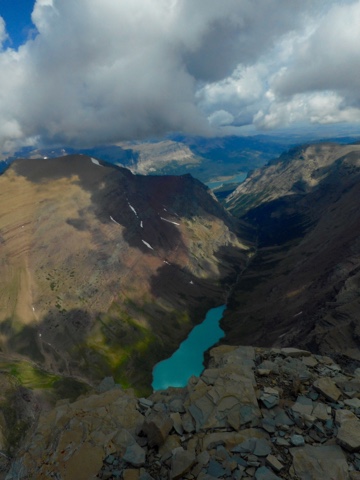Waterfalls are Standard Issue...
in North Cascades National Park.
There are plenty of Nature's other spectacles as well. This is a remote landmass where bipeds are and always will be a guest.
The reason? The topography is too steep and inaccessible. The mountains rise anywhere from 4,000'-6,000' above the valley floors. The slopes are in free fall. There's nothing gentle about the place. The word rugged doesn't explain the situation.
The park boasts 312 or so glaciers. (Of course, they are mostly receding). A third of all the glaciers in the Lower 48 live within this half-million acre Park. There's about 300 lakes too. That melting ice has to go somewhere.
There are few roads penetrating the vast interior. Washington State Highway 20 (AKA the North Cascades Highway) wasn't punched through until 1964. Most of the trails take the path of least resistance and follow the many waterways. There's a lot of territory that's never been squished down by a hiker's boot.
Dense old growth forests were spared the plight of the Paul Bunyan crowd due to these intimidating features. There's easier game to cut and mill. Miners tried their luck with limited success. They too gave up, but left a few reminders of their earth moving ways.
93% of the North Cascade Complex is designated wilderness. Now the Park attracts Seattle city slickers, climbers and folks like me. There's plenty of sightseers too, who only venture a few feet from the comfort of their Winnebago campers or sedans.
On the trails, climbers strut by burdened down with ice axes, rope and other tools to challenge rock and glacier. Families amble by too. On a sun-kissed day, it's a happy place.
Come by and see for yourself.
If you haven't figured it out yet, me and Barley the Van are on a great roll.
Cheers from Cle Elum's Whispering Pines RV Park. (Most of the trees are Douglas Fir)
Jeff
PS. Bring bug spray instead of bear spray. It's the Great North-Wet and it's buggy.
























